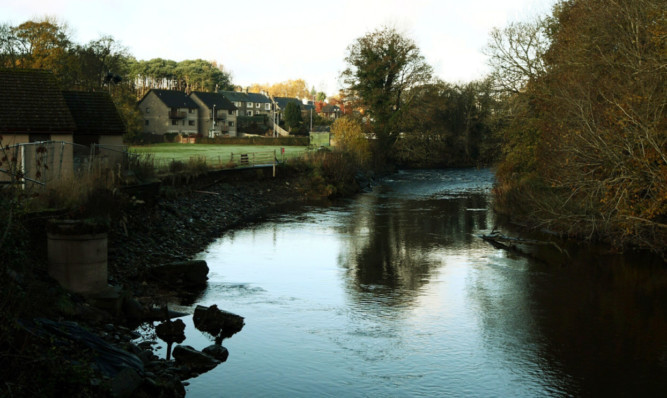Companies are being invited to bid for work on the first stage of a massive flood defences plan at a “high-risk” Perthshire village.
Almondbank and the nearby hamlet of Lochty have been hit by serious flooding problems repeatedly in the last 20 years.
Funding has already been secured for Perth and Kinross Council’s £14.75 million flood protection scheme, which will see a series of new walls and embankments built along the river Almond a tributary of the Tay and the East Pow Burn.
Road and foot bridges will also be replaced and raised as part of the two-year project.
Now the local authority has put the first two stages of the project out to tender.
A £200,000 ground investigation is needed to gather vital geological details before any work can take place.
Meanwhile, firms are also invited to submit offers for the £650,000 initial construction phase.
Work is scheduled to begin on site later this year.
The job will involve a clearance of the area and the creation of reinforced concrete flood walls, rock armour and a pumping station at the nearby Vector Aerospace plant.
The first phase, which could begin as early as December, is expected to be completed by the beginning of April 2015.
The entire defence project should be in place by 2016.
As well as work at the riverside, the village playing field will be modified to act as a flood storage area.
A replacement for the community sports pavilion will be built as part of the plan.
The Scottish Government has agreed to make a contribution of £11.6m towards the scheme.
The council said the plan will have a minimal impact on the environment.
The 1993 floods were considered to be the worst of three recent events, with the Black Bridge over the Almond being washed away.
Residents had to endure further flooding in 1999 when torrential downpours led to mud and water lying on the playing fields.
Debris was scattered all the way to the former Defence Aviation Repair Agency and the Black Bridge was closed.
The protection plan was agreed after further floods in 2011.
A study of the area found that there was a “high risk” of future problems.
A planning application for the work was submitted by council officers just before Christmas last year. It was approved by Scottish Ministers the following month.
A council spokeswoman said: “With the required statutory consents and funding now in place, the detailed design, tendering process and construction work for the project can now progress.”
She added: “The construction work is anticipated before the end of 2014 and is expected to take two years.”
